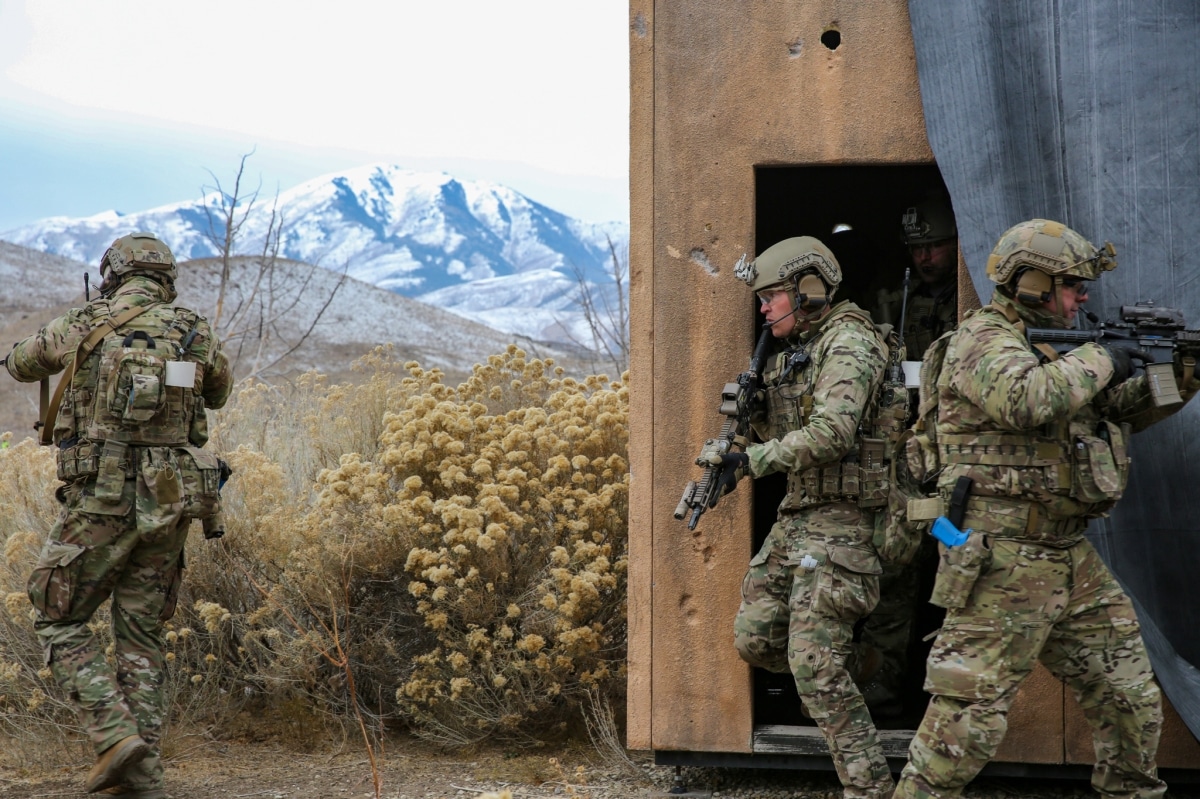During the March Unit Training Assembly, members of the 908th Security Forces Squadron conducted various training drills to achieve their yearly training goals.
“We are out here because we are trying to accomplish, and get them exposed to, any and everything that’s on their mission essential task list,” said Senior Master Sgt. Michael Connor, the security forces manager for the 908 SFS. “It’s extremely hard to do that as traditional reservists, but that’s why we’re out training today and what we’re going to continue to do until we’ve met that agenda.”
Under normal circumstances, the training day would have included a classroom portion, familiarization and then finally, direct exposure. However, members claimed to learn better with hands-on training, so the cadre skipped the classroom instruction and jumped right into strategic mission planning.
It’s important they not only learn to react, but understand how to plan a mission, identify their objectives, and ensure they have the skill set needed to survive and operate in a real-world scenario.
The extensive training day covered dismounted tactics and formations, leading and participating in an ambush, reaction to fire, indirect fire, crossing linear danger areas, reconnaissance, and breaking contact with a target.
To further elaborate, dismounted tactics are tactics that are done primarily on foot in conjunction with some type of formation. Wedge formation, line formations, and staggered columns are just a few variations that members use. When leading or participating in an ambush, members use a mixture of hand signals and stealth movements to anticipate enemy actions and locations before engaging contact. Reaction to fire is retaliation to an ambush. Indirect fire is when the target is not in the line of sight. Crossing a linear danger area requires a calculated assessment to determine the best way to cross. Reconnaissance is essentially a survey and test of the enemy’s information and disposition. Breaking contact is when they should leave the scene expeditiously.
The members carried out the training tasks using prior knowledge as well as methods they picked up from a recent training exercise in White Sands, New Mexico. For 21 days, several members from the 908 SFS participated in Operation Sage Eagle where they embedded and immersed themselves with the 5th Special Forces Group, 1st Special Forces Regiment.
“After spending time with the green berets, I noticed our security forces members picked up a lot of different tactics and techniques, such as some new hand signals,” said Tech. Sgt. Herman Cleveland, a trainer with the 908 SFS. “Normally, we go over the same skills every year to build upon our skill set, but I was glad to see they were innovative and incorporated what they learned from them in today’s training.”
Those skills are part of the individual members upgrade training to becoming five or seven skill levels. Not only is it needed to meet yearly requirements, but training helps them get a firmer idea of what they’re going to be faced with on deployments.
“With today’s training there were a lot of errors made, but they wouldn’t be learning if they didn’t make errors,” said Tech. Sgt. Anthony Knizle, the second-in-charge training instructor for the 908 SFS. “We want them to mess up right now. We want our defenders to build confidence, camaraderie, teamwork and let this stuff sink in their minds and build muscle memory.”
Once a training scenario is over, security forces members and their instructors dissect and digest what just occurred. They go over their strengths and areas which require improvement and hopefully walk away with a sense of self-assurance and fulfillment.
“We train because nobody has experienced the next fight that may be in front of us,” added Conner. “We’re trying to follow along with the AFFOROGEN cycle (reset, prepare, get ready to deploy, and deploy). Currently, we’re in the preparation phase and we’re doing everything we can to be the most prepared for what’s to come.”
This level of progress shows that security forces members keep up on their deployment preparedness and are trained and ready for the fight. They are a vital part of accelerating and sustaining readiness at the 908th.






